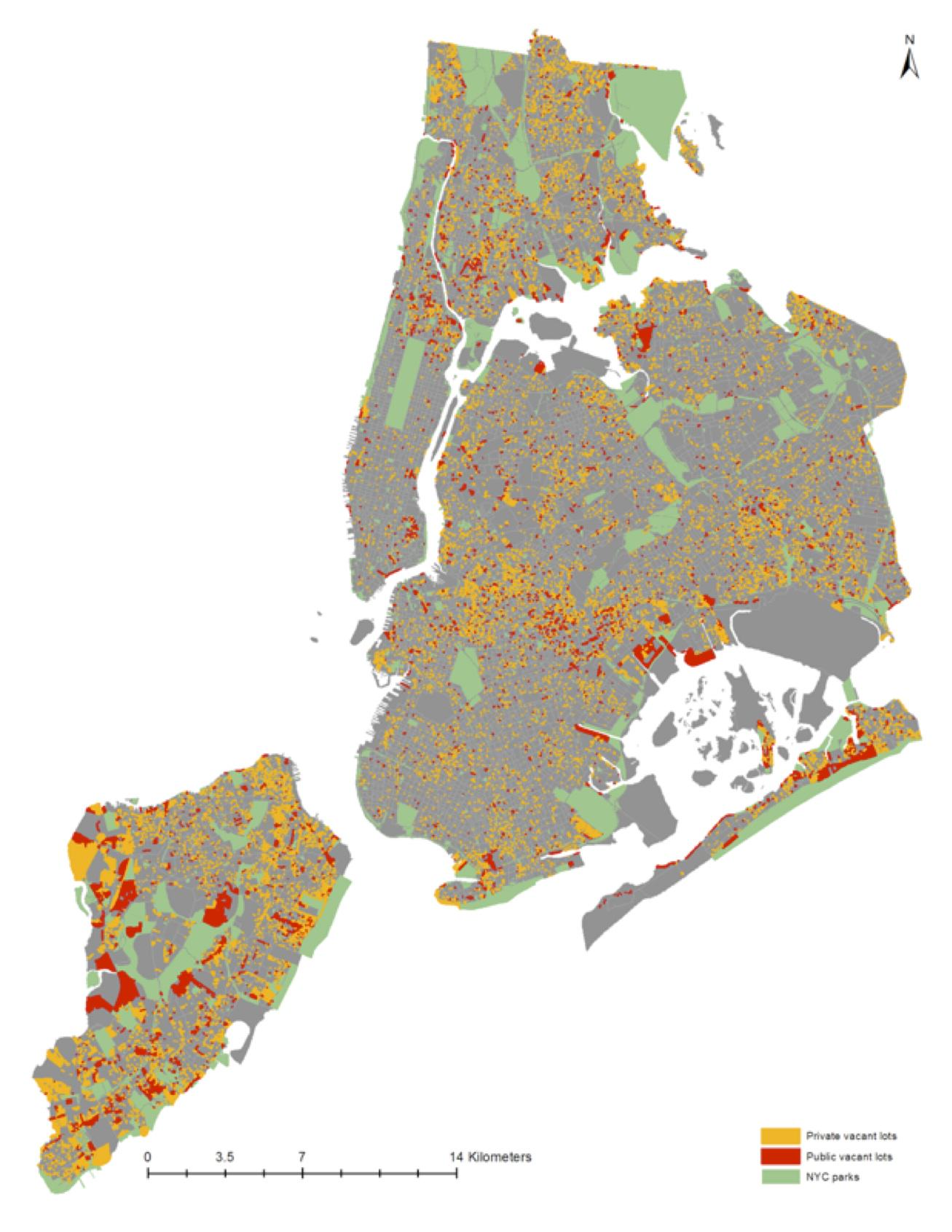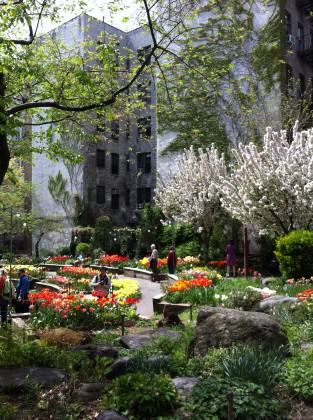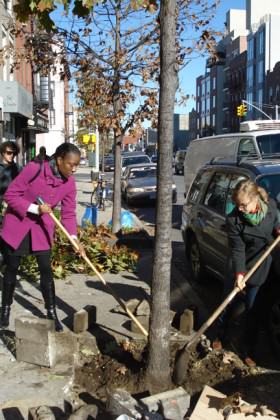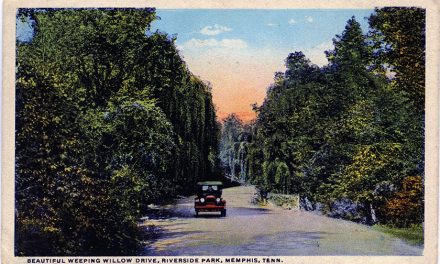From The Nature of Cities:
Walk through any major city and you’ll see vacant land. These are the weed lots, garbage strewn undeveloped spaces, and high crime areas that most urban residents consider blights on the neighborhood. In some cases, neighbors have organized to transform these spaces into community amenities such as shared garden spaces, but all too often these lots persist as unrecognized opportunities for urban improvement. In densely populated cities with sometimes few opportunities for new park or green space development, small vacant lots could provide green relief, especially in low-income areas with reduced access to urban parkland.
And yet, few cities are taking advantage of these underutilized spaces to improve urban biodiversity and provide additional ecosystem services. What’s even more surprising is the vast amount of urban land that is categorized as vacant. Take New York City for example: in this urban metropolis there are 29,782 parcels designated by the city tax code as vacant within the city boundaries, not counting vacant land in the surrounding suburbs and exurbs. This totals more than 7,300 acres of land that could be providing important social and ecological benefits for urban residents.
 There are 29,782 publicly owned (red) and privately owned (orange) vacant lots in New York City. When combined they represent a sizable opportunity for urban improvement. NYC Parks are shown in green for reference. Image credit: Peleg Kremer (all rights reserved).
There are 29,782 publicly owned (red) and privately owned (orange) vacant lots in New York City. When combined they represent a sizable opportunity for urban improvement. NYC Parks are shown in green for reference. Image credit: Peleg Kremer (all rights reserved).
 Urban garden in Manhattan, New York City. Photo by David Maddox.
Urban garden in Manhattan, New York City. Photo by David Maddox.
Here is what we know: Local and regional urban ecosystems provide important services that urban residents rely on for daily living. For example, ecosystems can supply clean water, produce food, absorb air pollution, mitigate urban heat, provide opportunity for recreation, decrease crime, and more. A recent publication from TEEB (The Economics of Ecosystems and Biodiversity) details the list of ecosystem services that can be provided by urban ecosystems.
And yet, all cities do not have the same level of food production, clean water supply, or air pollution removal. Different levels of ecosystem services among cities are due to a myriad of reasons. However, research is beginning to make clear that to improve urban sustainability and resilience city planners and policymakers need to strategically develop and manage the ecological resources within the city to meet the needs of expanding urban populations.
 Green infrastructure is being improved and expanded in New York City to improve the capacity of the city to absorb stormwater run-off, an important ecosystem service of green space in cities. Photo by New York City Department of Parks and Recreation.
Green infrastructure is being improved and expanded in New York City to improve the capacity of the city to absorb stormwater run-off, an important ecosystem service of green space in cities. Photo by New York City Department of Parks and Recreation.
To improve the quality and quantity of ecosystem services that cities can reliably depend on, and given the financial difficulties most cities are facing, we need to find the low cost investment/high rate of return urban spaces where urban biodiversity and ecosystem services can be improved. These have to be spaces where people can interact with people (a component of ecosystems) and where people can interact with other components of ecosystems (air, soil, water, plants, animals). It’s also important for us to better understand urban people-nature dynamics (also termed social-ecological dynamics), which are about how interacting social and ecological components of ecosystems change over space and time and, for me anyway, understanding what these changes mean for future urban sustainability and resilience.
Lots of vacant land
One of the results of rapid population shifts in cities is the abandonment of previously occupied land. You can see the effects of this in older cities just by walking around. It is nearly impossible not to find land that is vacant in a city, regardless of whether you are in New York, Berlin, Sao Paulo, Shanghai, or Jerusalem. Vacant land typically results from human migration, deindustrialization, environmental disaster, decreased birth rates or contamination, and occurs at various concentrations in cities across the world. Though all cities have vacant land, some have more than others. In some cities the amount of vacancy is tremendous, such as in Detroit, Michigan (USA) where nearly one third of the city is vacant land.
So, why am I so captivated with these overlooked, unmanaged, vacant spaces in cities, especially considering that they are not the most pleasant places in which to conduct research? For one simple reason: vacant, underutilized land has the potential to provide cities with opportunity to create and develop new ecosystems that support biodiversity and increase the provisioning of vital ecosystem services for urban residents. Vacant land is ripe for transformation into more sustainable, resilient urban forms. I’m not the only one who is thinking along these lines. Urban ecologists have long recognized that the ecology in the city is not relegated to parks and protected natural areas, but exists everywhere: on rooftops, in sidewalk cracks, in backyards, in soils, rivers, and streams, in narrow green islands between streets, and also in vacant land areas.
To read more, click here.



